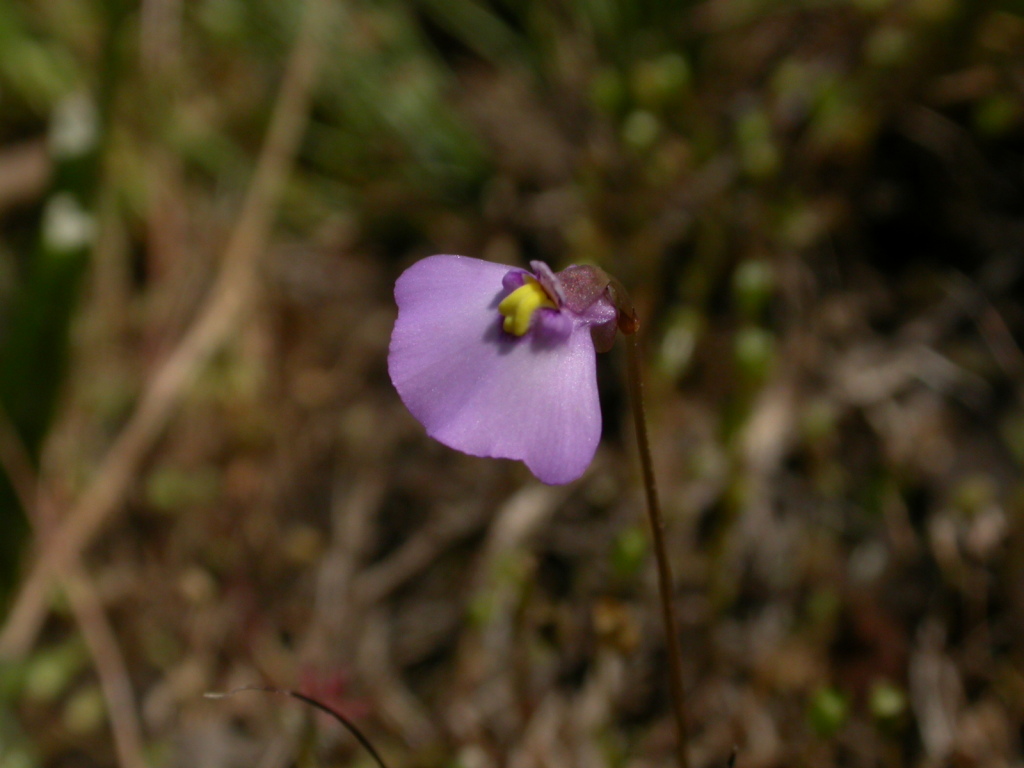Utricularia barkeri
R.W.JobsonTerrestrial perennial; stolons present. Leaves few, basal to flowering stem and on stolons, linear to narrowly obovate to ovate or spathulate, 3–12 mm long. 0.2–0.6 mm wide. Traps few, from base of flowering stem and nodes of stolons, ovoid, 1.5–2 mm long. Racemes solitary, erect, 8–28 cm long, flowers usually 2, paired, occasionally solitary or a third flower present above the pair; sterile bracts absent; fertile bracts attached near midway, ovate, more or less oblong, 1–2 mm long, apex rounded, base truncate; bracteoles similar to bracts; calyx-lobes subequal, upper lobe broad-ovate, c. 2.5 mm long and wide, truncate; lower lobe ±circular, with shallowly emarginate apex. Corolla 5–12 mm long, light mauve; upper lip oblong, distinctly constricted about the middle, ±truncate, flecked darker mauve; lower lip much larger, fan-shaped, with 2 raised yellow ridges flanked by 2 purple ridges of about the same length or slightly shorter; palate pubescent; spur cylindric, about two-thirds length of lower lip, striaght, broadly bilobed at apex. Capsule globose, 3–3.5 mm diam.; seeds obovoid, c. 0.5 mm long. Flowers Oct.–Jan.
GleP, VVP, GipP, WaP, CVU, GGr. Also SA, Tas. Known from lowland swampy heaths from the South Australian border to the Mornington Peninsula, but possibly more widespread and confused with Utricularia dichotoma.
 Spinning
Spinning

